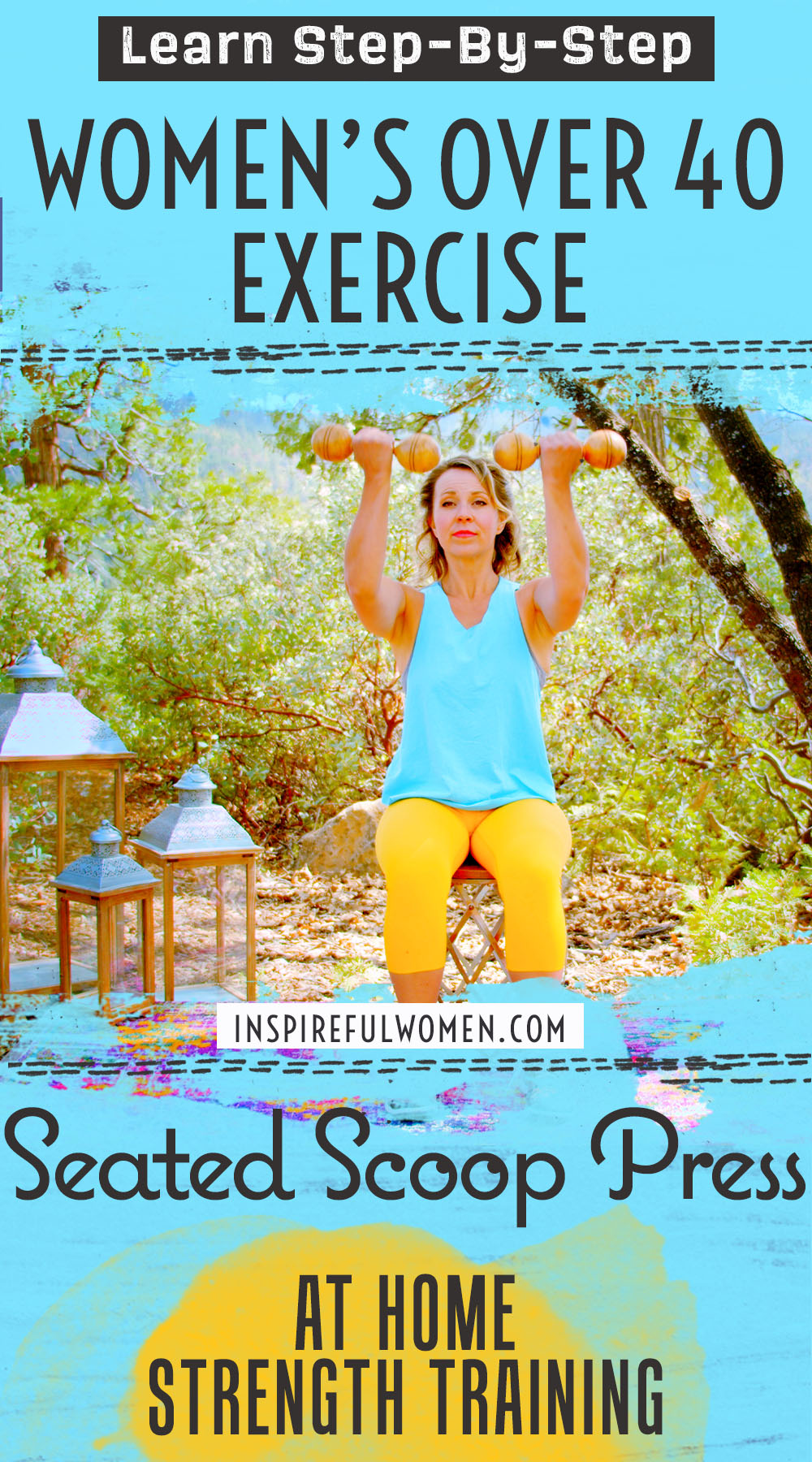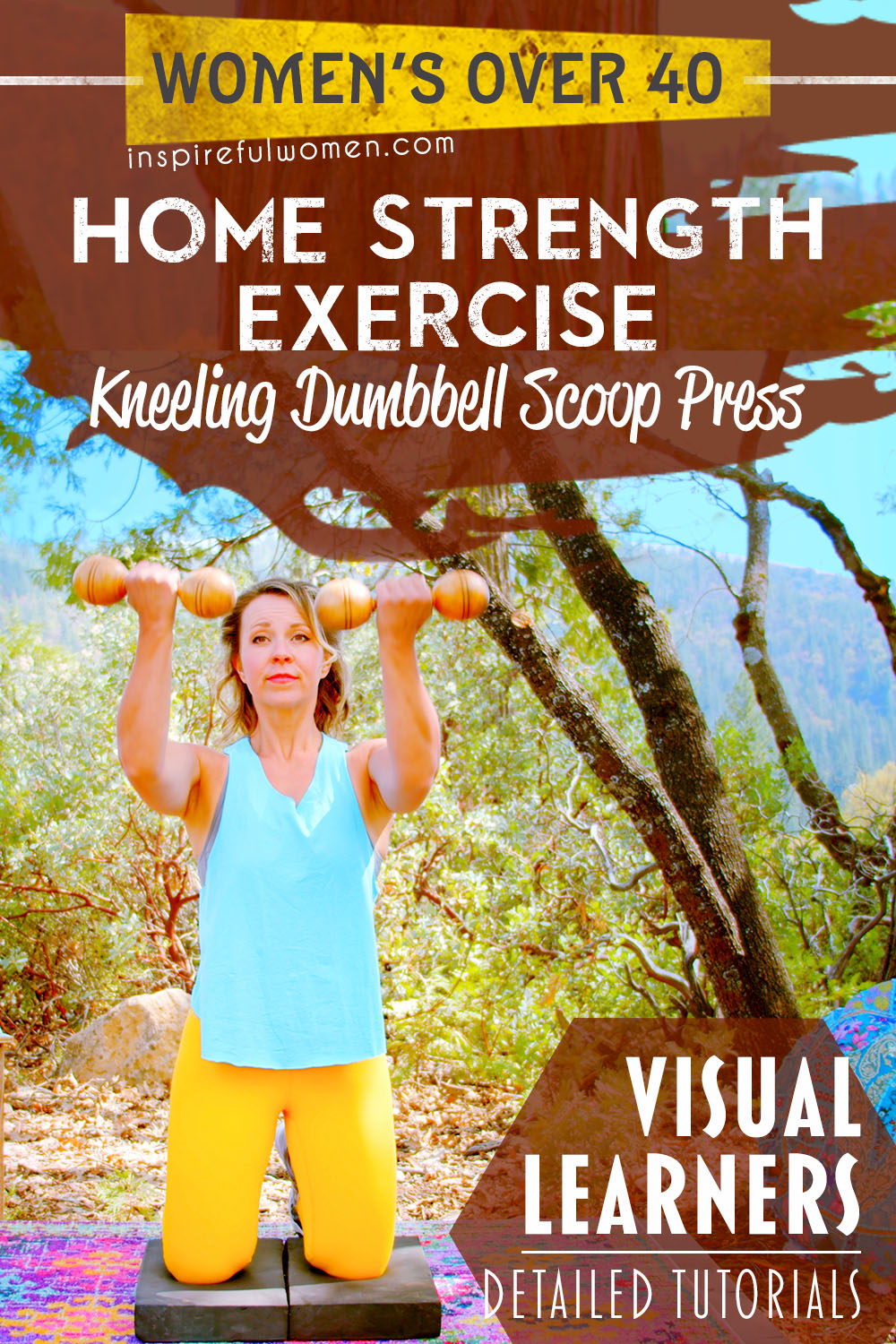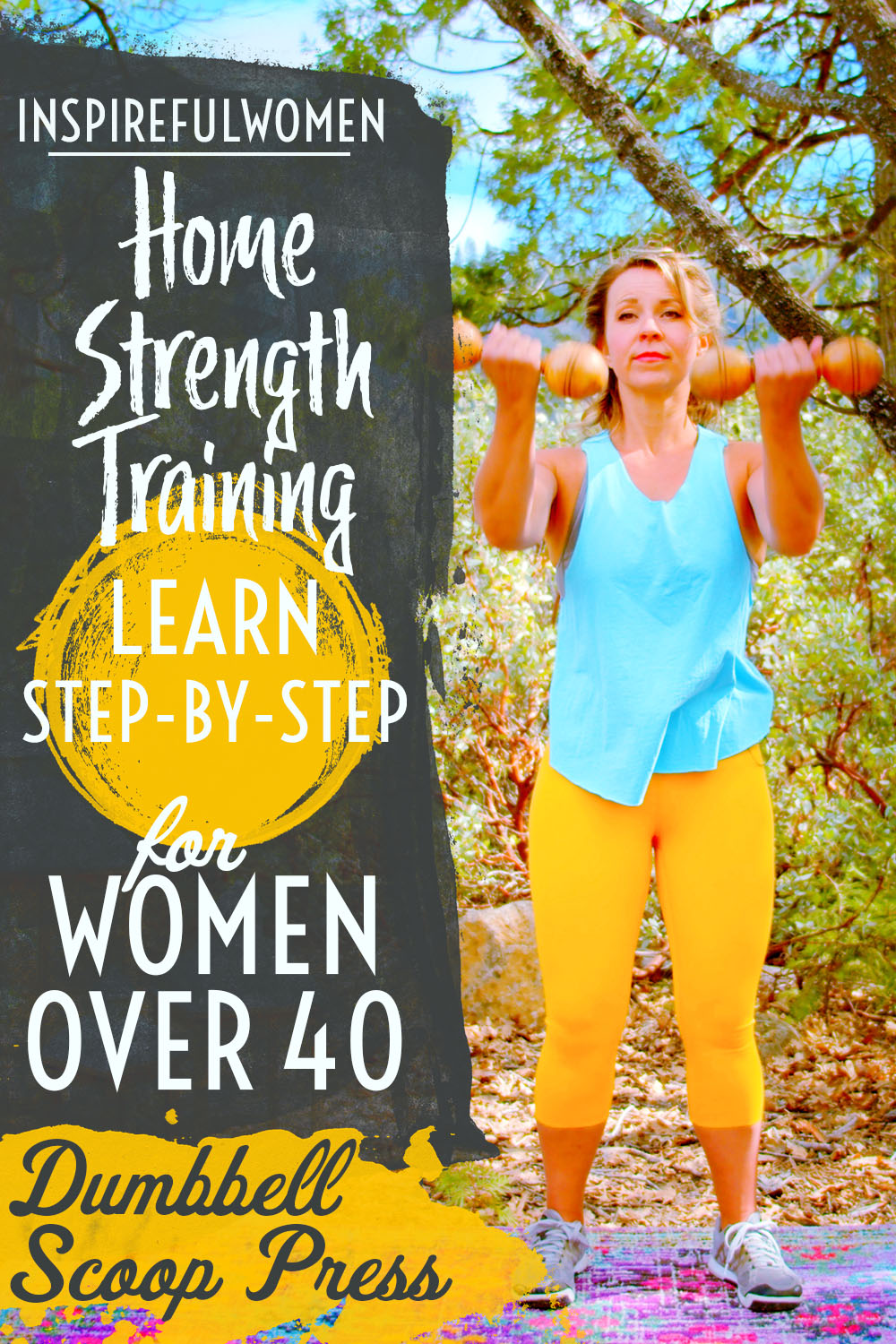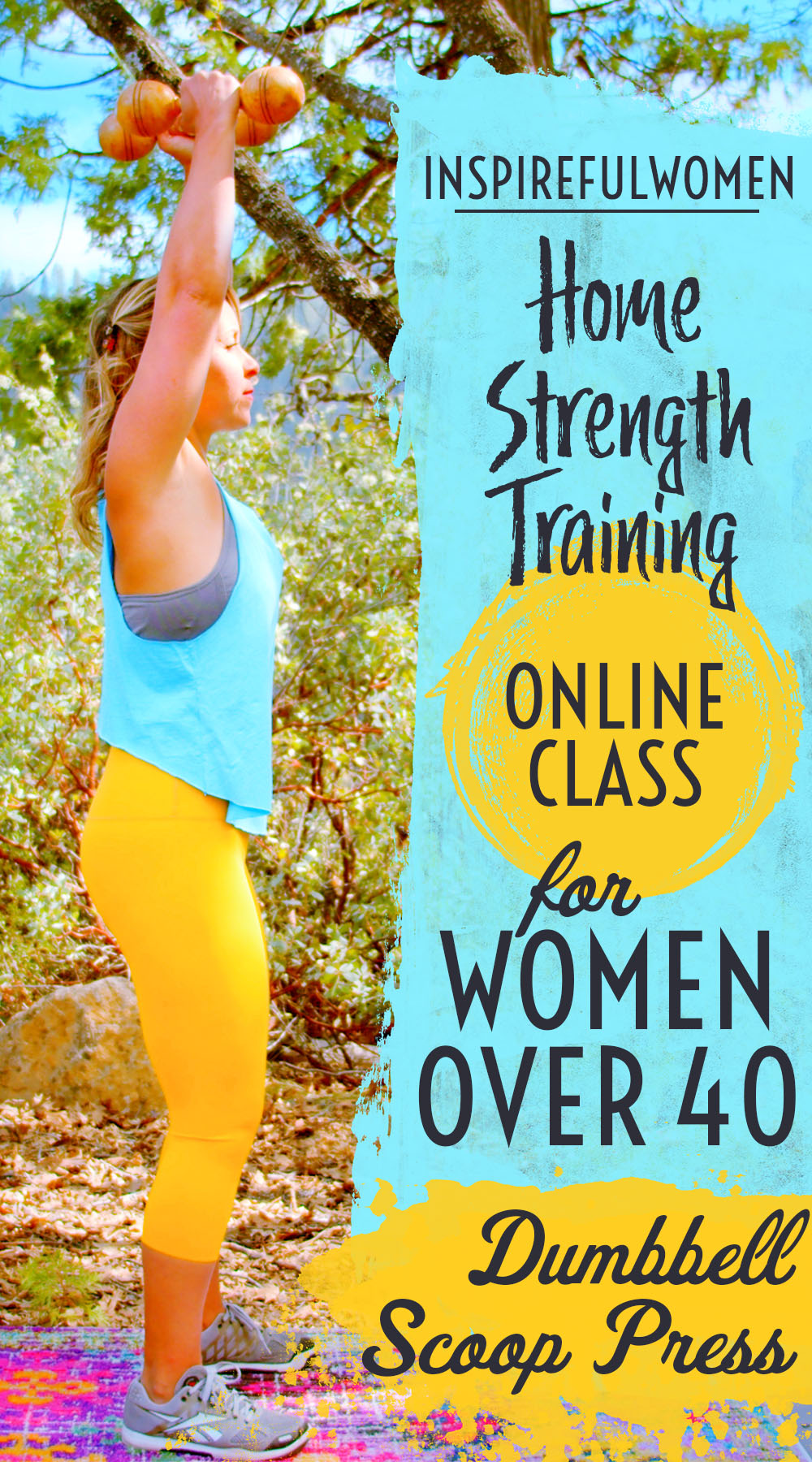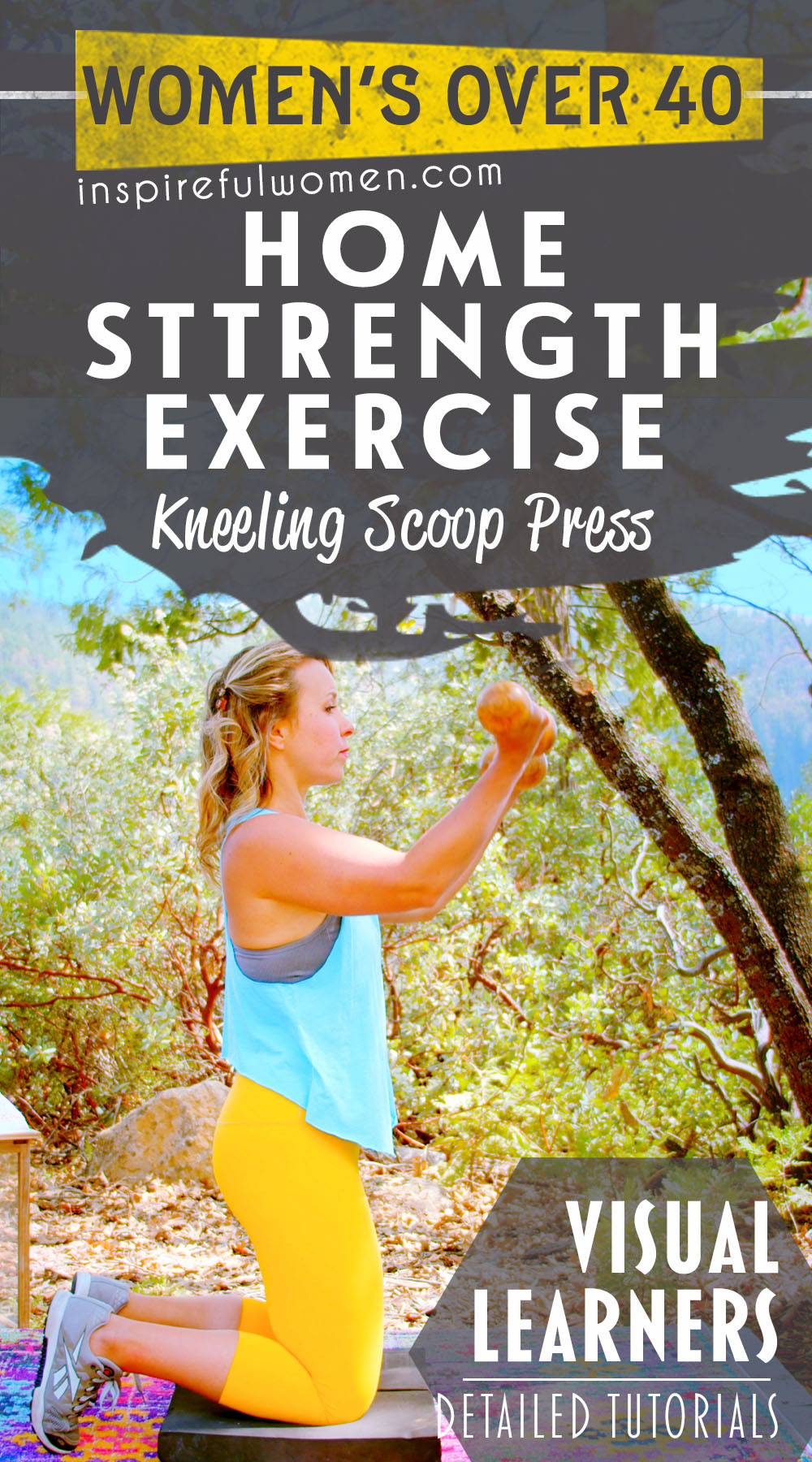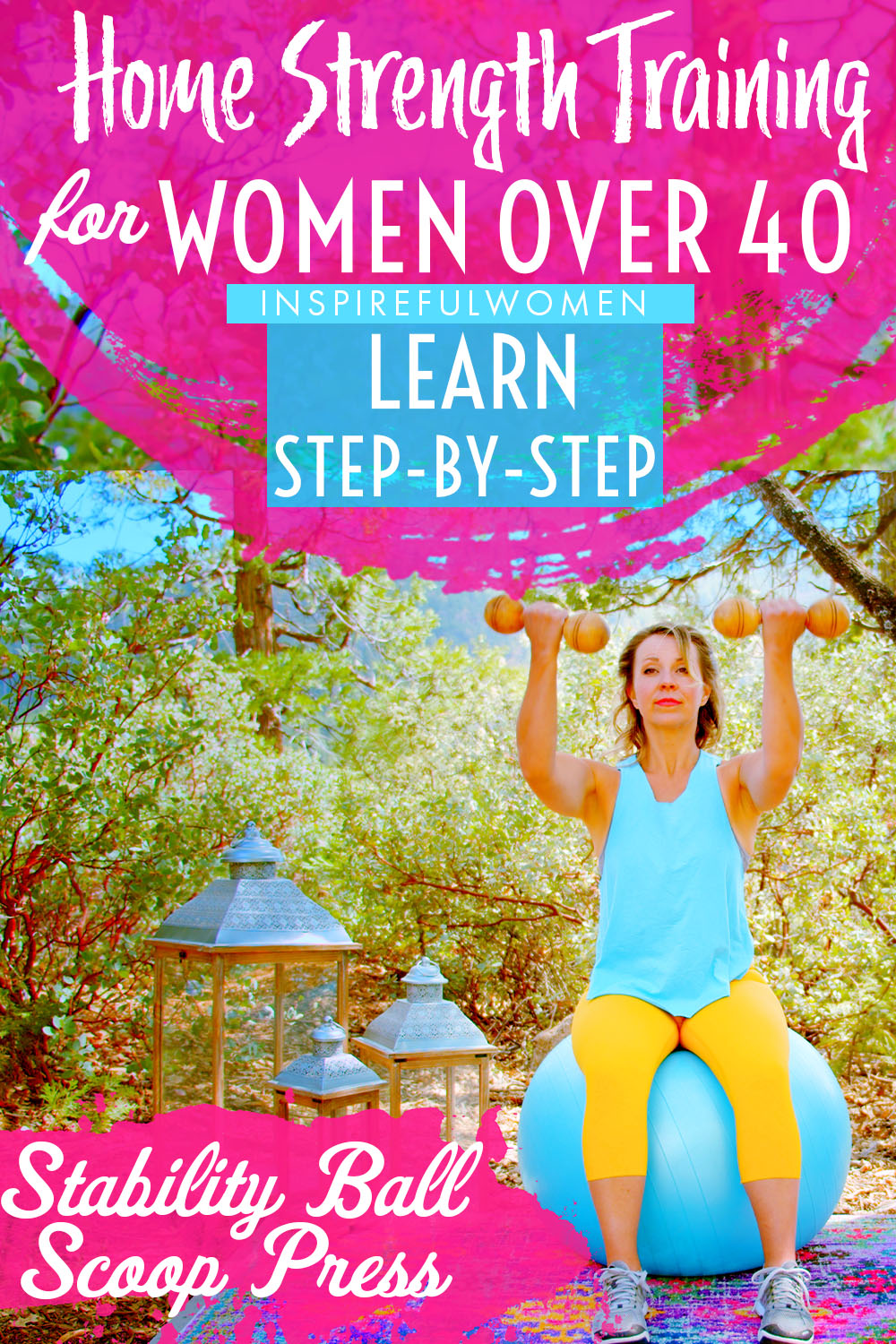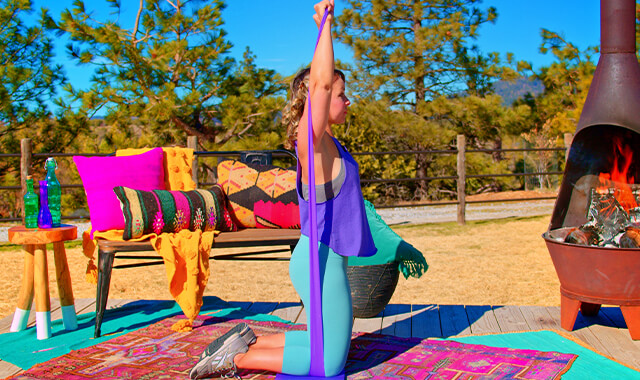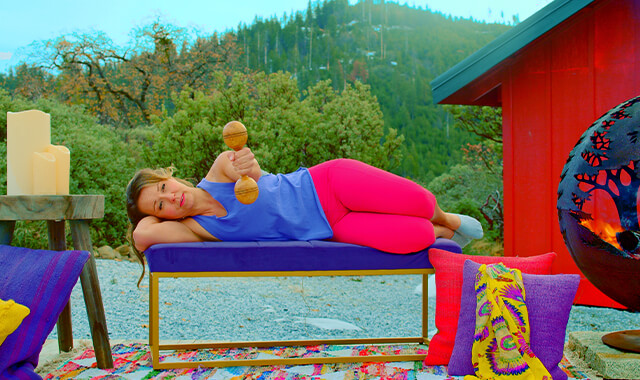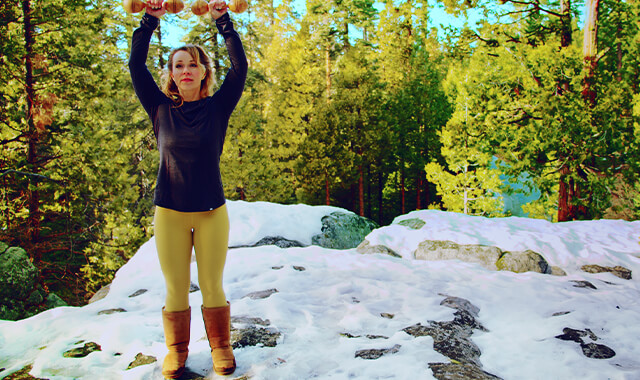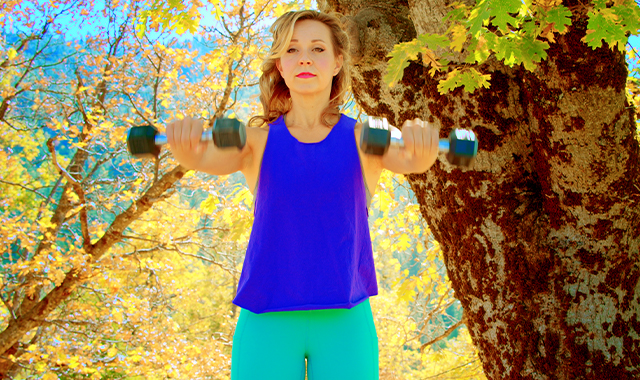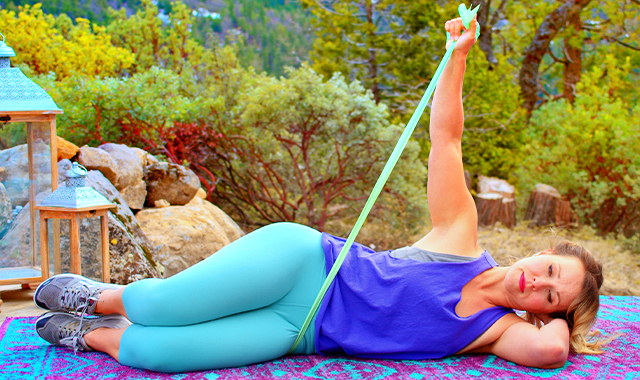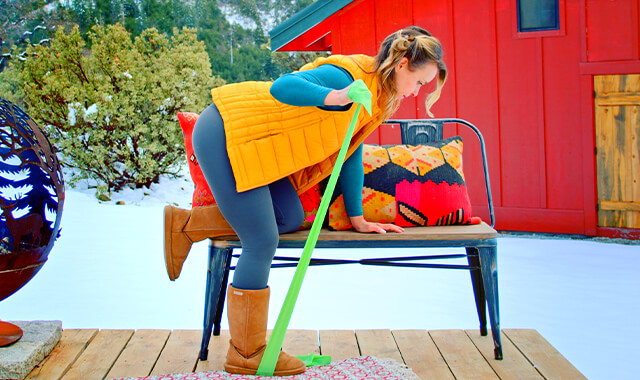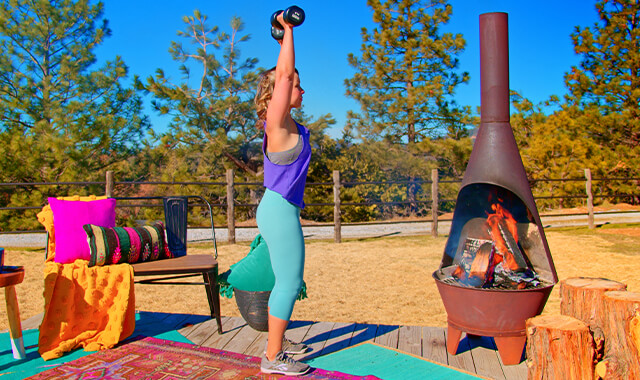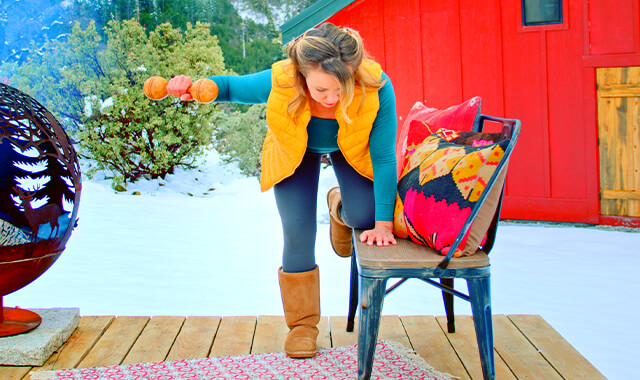Dumbbell Scoop Press
How to Do the Dumbbell Scoop Shoulder Press | In-Depth Guide [VISUAL LEARNERS]
Proper Form, Common Mistakes, & Variations | Home Resistance Training
WHAT DO YOU WANT TO SEE?
QUICK DEMO
QUICK DEMO
MUSCLES THIS WORKS
MUSCLES
MAIN MUSCLES WORKED IN Dumbbell Scoop Presses
Anterior Deltoid and Triceps
OTHER MUSCLES WORKED:
- Biceps
- Pectoralis major
- Coracobrachialis
WHAT WE'RE DOING TODAY
WHAT & WHY
BENEFITS OF TRAINING THE Anterior Deltoid and Triceps
WHAT
WHAT WE'RE DOING TODAY
ALL WE'RE DOING:
We're doing a scooping motion with our arms to overhead.
The Scoop Press is a version of an overhead shoulder press that will let you work the muscles through a bigger range of movement. The movement starts with the arms slightly behind the body with the elbows bent. The muscle on the front of the shoulder and chest will work to pull the arm forward and lift it up. The arms are scooped forward until the upper arm is parallel to the floor and then the arms are pressed overhead. The arms move from extension behind that back and in this position, there is a nice stretch of the muscles on the front of the chest and upper arm. The tricep muscle - on the back of the upper arm works to straighten the elbows as the arms press up overhead. You will feel a stretch of the arms as the arms press up. The arms are brought back down by reversing the direction.
The scooping motion moves the shoulder joint from full extension behind the back to full flexion overhead - bringing blood to the tissues and loosening up tightness.
WHY BOTHER DOING IT?
WHY
WHY DO WE EVEN CARE?
MOVE JOINTS IN THEIR FULL RANGE OF MOTION TO KEEP THEM HEALTHY
Most daily activities are done with our arms in front of us, in a pretty small range - moving from having the arm right by our sides to lifting them up to below shoulder height. We rarely move our arms behind our backs, or all the way up overhead. Joints need movement - movement lubricates the joint, brings nourishment and gets rid of waste. Movement also keeps the tissues nice and flexible.
KEEP OUR UPPER BACK MOBILE
Reaching overhead helps to keep the upper back mobile. The upper to mid back (thoracic spine), tends to be stiffer because the ribs attach to all of the thoracic vertebrae (the bones that make up the portion of the spine that runs from the mid to upper back). The ribs wrap around the torso and attach to the breastbone (sternum), forming a protective cage around the heart and lungs. This cage of ribs limits the amount of movement that you have in your upper back. The ribs need to move, they have to move in order for you to be able to rotate to look over your shoulder, when you move your arms, and when you breathe. Including upper body exercises that work the arms to the back and overhead are a good way to keep the shoulders, ribs and upper back mobile and healthy.
PREVENT SHOULDER WEAKNESS AS WE AGE
Working the arms overhead helps to prevent shoulder weakness that can happen as we age. When daily activities do not include a lot of lifting, reaching, and pushing overhead we can lose shoulder strength and range of motion. Including this in our exercise is a good way to keep & improve our ability in this regard, and might give us the strength & confidence to do more of that lifting, reaching & pushing overhead in regular daily activities as well.
EVERYDAY LIFE
EVERYDAY LIFE &
MUSCLE FUNCTION
HOW WE USE OUR FRONT Delt & Triceps IN EVERYDAY LIFE
ANTERIOR DELTOIDS (front of shoulder muscle)
1. LIFTS THE ARMS UP TO THE FRONT OF THE BODY AND OVERHEAD (FLEXION)
- Reaching high shelves
- Changing light bulbs
- Washing windows
- Putting luggage in an overhead bin
- Painting walls/ceilings
- Dressing
- Washing hair
- Lifting babies out of crib
2. CARRYING ITEMS IN FRONT OF YOU/STABILIZE THE SHOULDER JOINT
- Kids
- Boxes
3. PUSHING
- Grocery cart
- Stroller
- wheelbarrow
TRICEPS
1. STRAIGHTENS THE ELBOW
- Reaching
- Throwing a ball
- Dressing
- Reaching high shelves
- Changing light bulbs
- Washing windows
- Pushing luggage into an overhead bin
- Painting walls/ceilings
- Pushing a door open
- Pushing up off of the floor
STARTING POINTERS
Starting Pointers
This version of the Scoop Press is done with 2 dumbbells. You can use this exercise as a nice warm-up with no weights or light weights.
Once you feel like the tissues are warmed up and your motion is good go ahead and add more weight. Working the arms all the way up overhead can be difficult for many people that have stiff or tight shoulders and/or upper backs, and those who are not used to a lot of overhead lifting. This movement can be good for you, but it can also cause discomfort if you don’t have the mobility. Take it slowly and listen to your body. It is recommended that you start with lighter weights and not too many reps until you have good movement and form, progress slowly.
HOW TO FEEL WHAT MUSCLE IS WORKING
How to Feel What Muscle is Working
Place your forearm under the table. Put your fingers of the opposite hand on the top of the shoulder of the arm that is under the table. Slide your fingers forward about ½ inch so that they are in front of the flat bony surface on the top of the shoulder. Pill the forearm up into the bottom of the table as if you were going to lift the table. You should feel the anterior deltoid activate under your fingers.
Move the hand that is under the table onto the edge of the table, and have the elbow slightly bent. Move the other hand from the top of the shoulder to the back of the arm. Push into the edge of the table. You should be able to feel the triceps activate under the fingers of your hand that is on the back of the upper arm.
HOW TO DO THE EXERCISE
LOOKS
HOW Dumbbell Scoop Presses SHAPE OUR BODY
Defined and toned shoulders and upper arms (the underside of the upper arm that tends to get droopy with age).
PROPER FORM
PROPER FORM: Dumbbell Scoop Press
EQUIPMENT, SETS & REPS
EQUIPMENT
SUGGESTED STARTING WEIGHT FOR WOMEN:
5-8 pounds
SETS & REPS:
2 sets of 8 reps
PACE:
Moderate but controlled up and slow down.
BODY POSITION
BODY POSITION FOR THE Dumbbell Scoop Press
FEET: Shoulder width apart, toes pointed forward.
BODY STANCE: Neutral spine (includes neck), knees slightly bent, sternum lifted, shoulder blades in and down the back, space between the top of your shoulders and your ear lobe. Chest wide - to avoid rounding your shoulders in. Abdominals gently engaged.
ARMS: Bend your elbows so your forearm will be parallel to the floor (90 degrees). Your upper arm is held back pushed back behind your torso (extension), your hands will be at the sides of your torso.
GRIP: Your forearms are supinated (palms up) and hold one weight in each hand. Your hands are in line with your elbows.
HOW TO DO
HOW TO DO Dumbbell Scoop Presses
CUE: Keep your upper arms close to your body to get the most anterior deltoid activation.
Push your hands forward and into a scooping motion, keep your elbows bent.
When your upper arm is parallel to the floor, push your hands up towards the ceiling.
Your upper arm will move from parallel to the floor to perpendicular as your elbows straighten.
Think of pushing all the way through the movement - from the starting position push your fists forwards scooping upward and push your fists up to straighten your elbows.
Keep the elbows in, so the upper arm travels straight forward and pushes up.
The elbows should be close to your ears and straight but not locked at the top of the movement.
Bend your elbows, and lower your arms down with control and back behind your torso to start the next rep.
HOW TO SAFELY GET OUT OF THE EXERCISE
From the beginning position, squat to set the weights down.
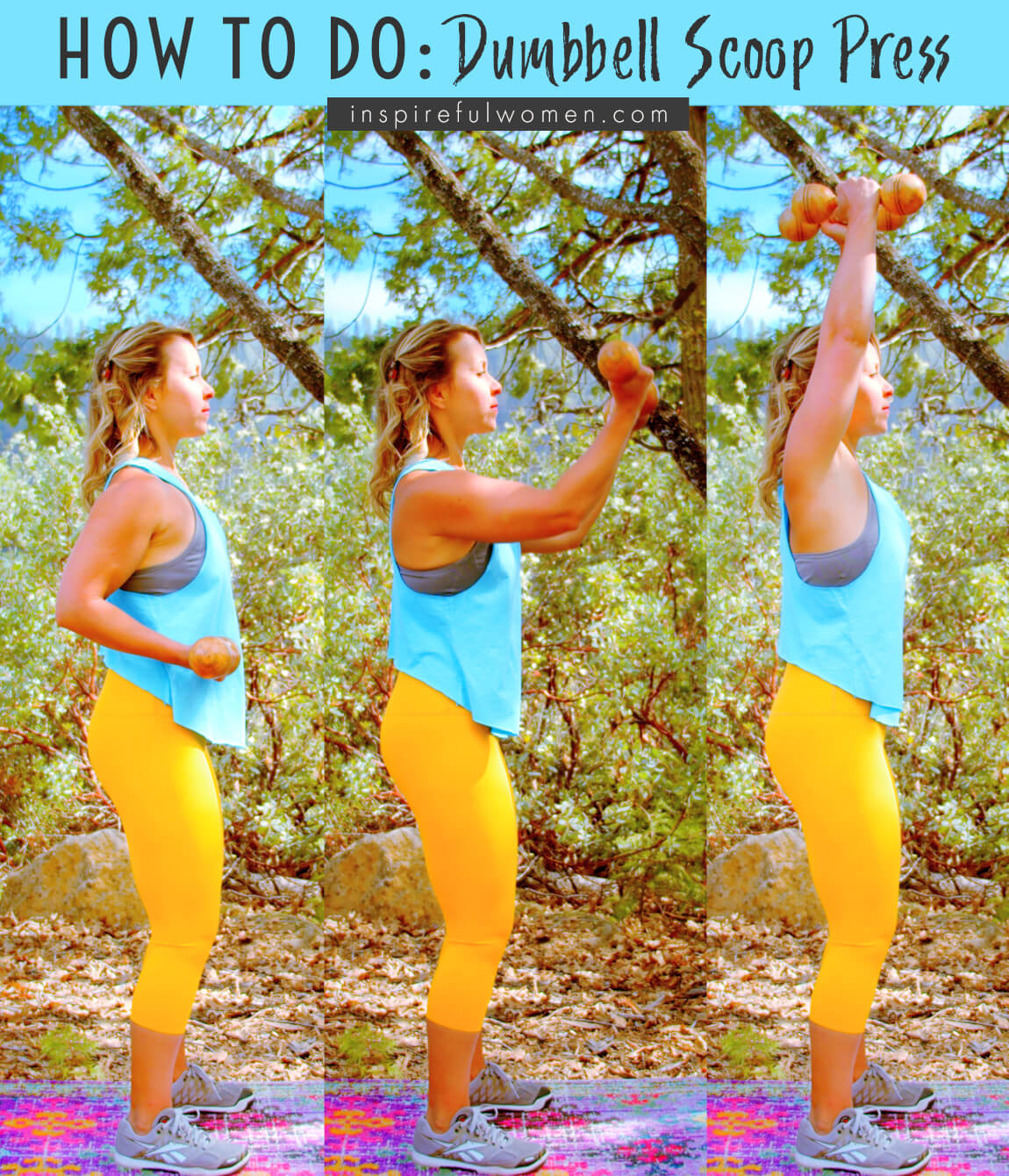
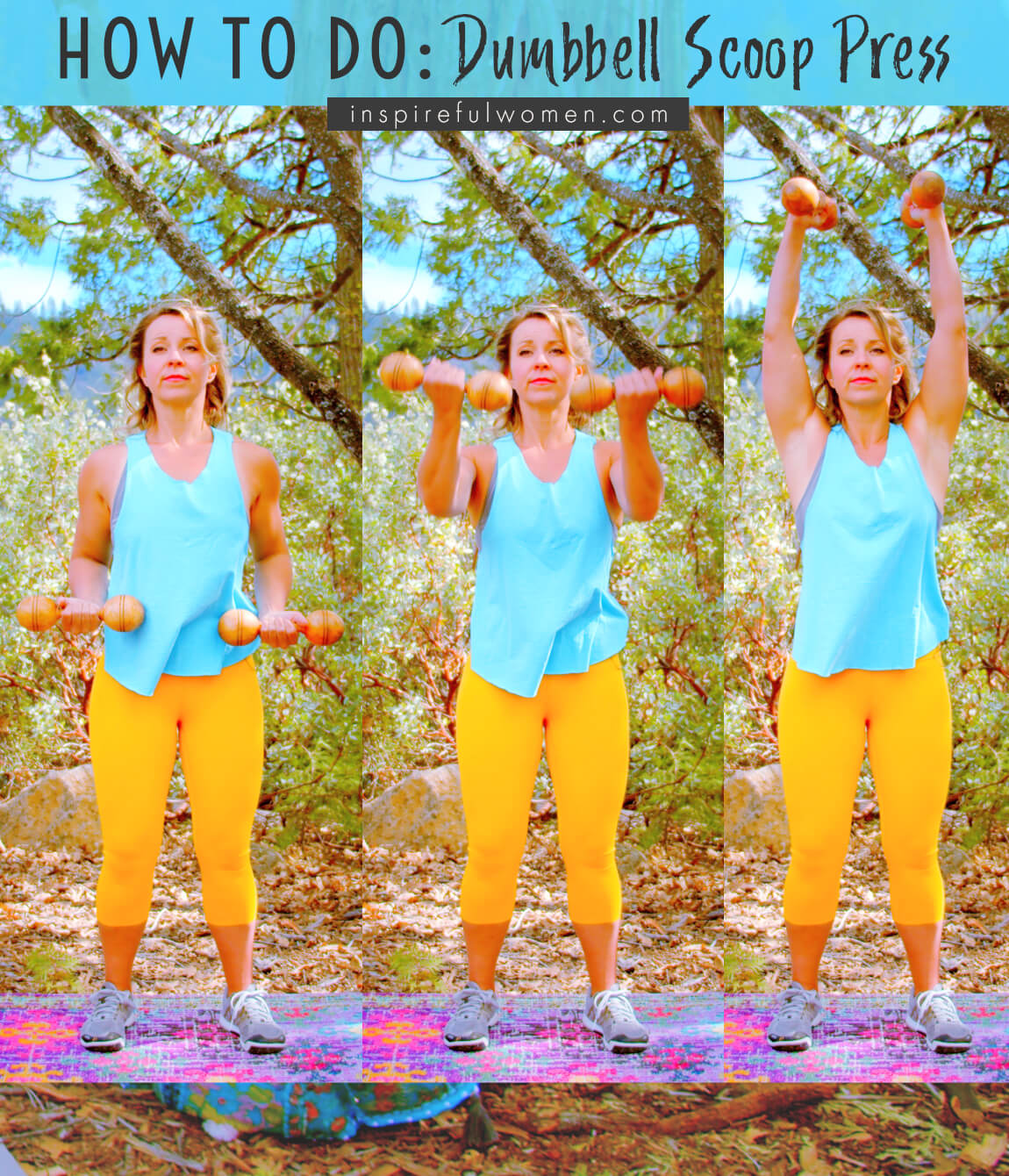
COMMON MISTAKES
COMMON MISTAKES
WHAT TO AVOID WITH THE Dumbbell Scoop Press
KEY TIP:
Guess what? Good news! Many avoids are the same for most movements. Once you learn the basics, there's really only a few extra avoids for each individual movement.
1. Avoid shrugging shoulders
AVOID: Shrugging the shoulders as you push the weight up overhead.
WHY NOT?
- Shrugging the shoulders up uses the upper trap and levator muscle and will pull the whole shoulder blade up, interfering with the healthy movement of the shoulder joint and can cause irritation of the biceps and supraspinatus (rotator cuff muscle) over time (impingement).
WHAT TO DO:
- The shoulder blade will rotate upwards but it should not lift up.
- You should still have space between your ear and your shoulder.
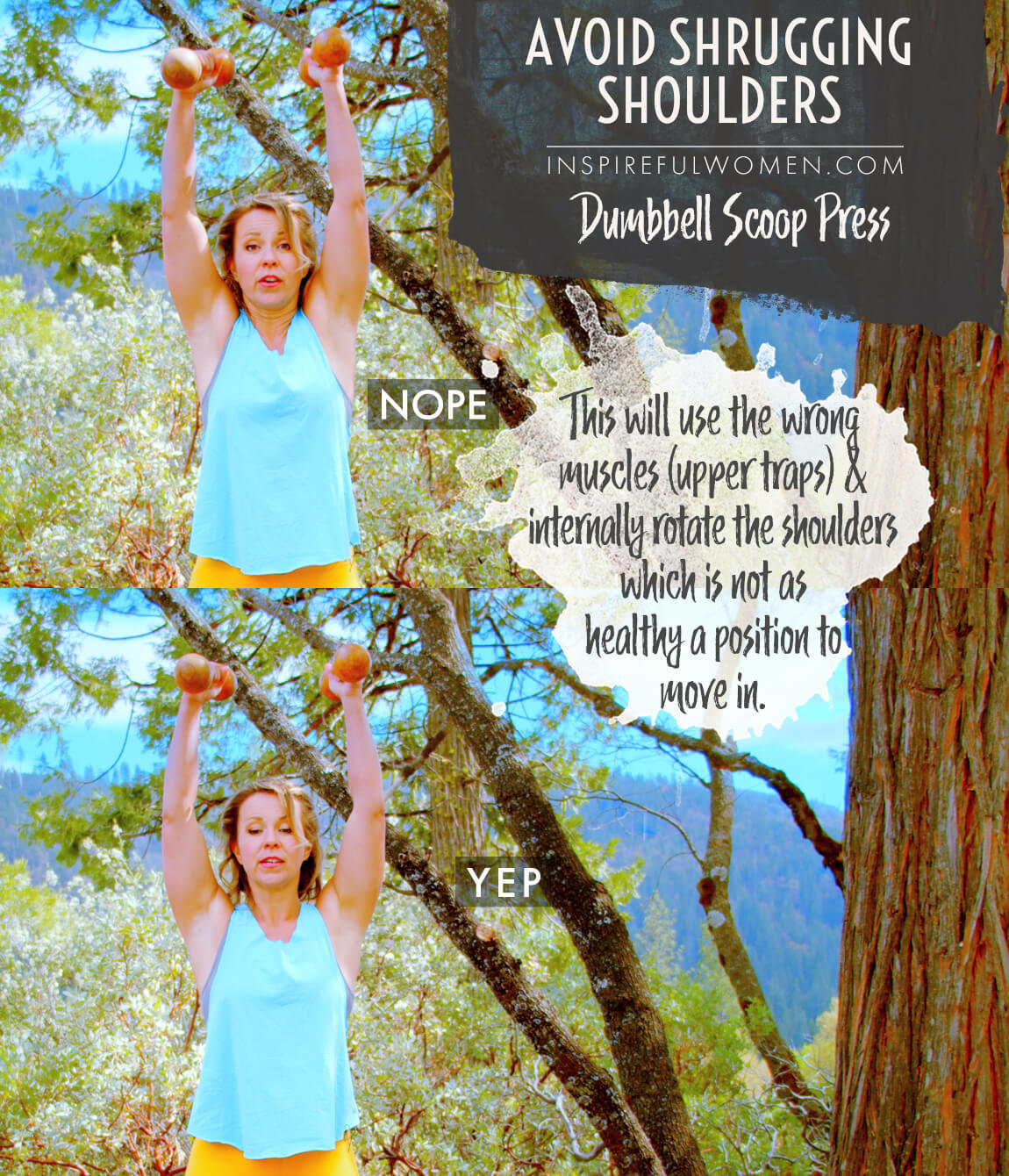
2. Avoid arm pulled too far back
AVOID: Letting the resistance pull your hands too far back.
WHY NOT?
- This can result in arching the low back.
WHAT TO DO:
- Maintain a neutral spine position to prevent low back joint injury, muscle strain, or damage over time.
- If your ribs lower ribs flare upwards or your belly is lifted up - this indicates you are arching your low back.
- If your shoulders or upper back are tight you may start to arch your low back to get the arms higher.
- If you feel pressure or discomfort in your low back just your position
- You may need to limit how far you take your arms overhead.
- Keep the knees slightly bent and the abdominal muscles activated to prevent arching your low back.
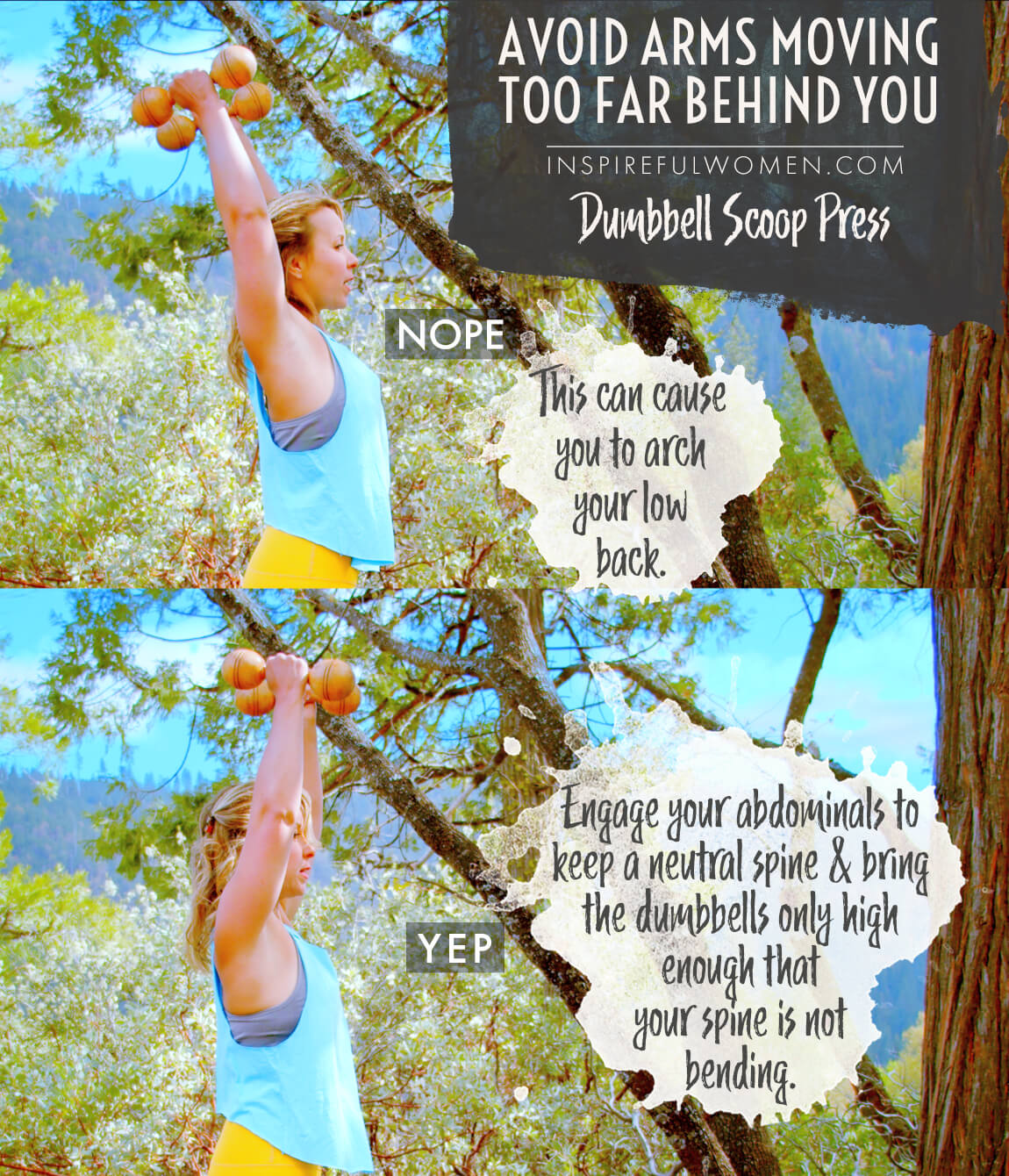
3. Avoid locking knees
AVOID: Straightening or locking the knees.
WHY NOT?
- If your knees are locked you may feel pressure or discomfort in the low back or knees.
- Locking the knees puts stress on the knee joint and can make it more difficult to maintain a neutral spine.
WHAT TO DO:
- The knees should be soft.
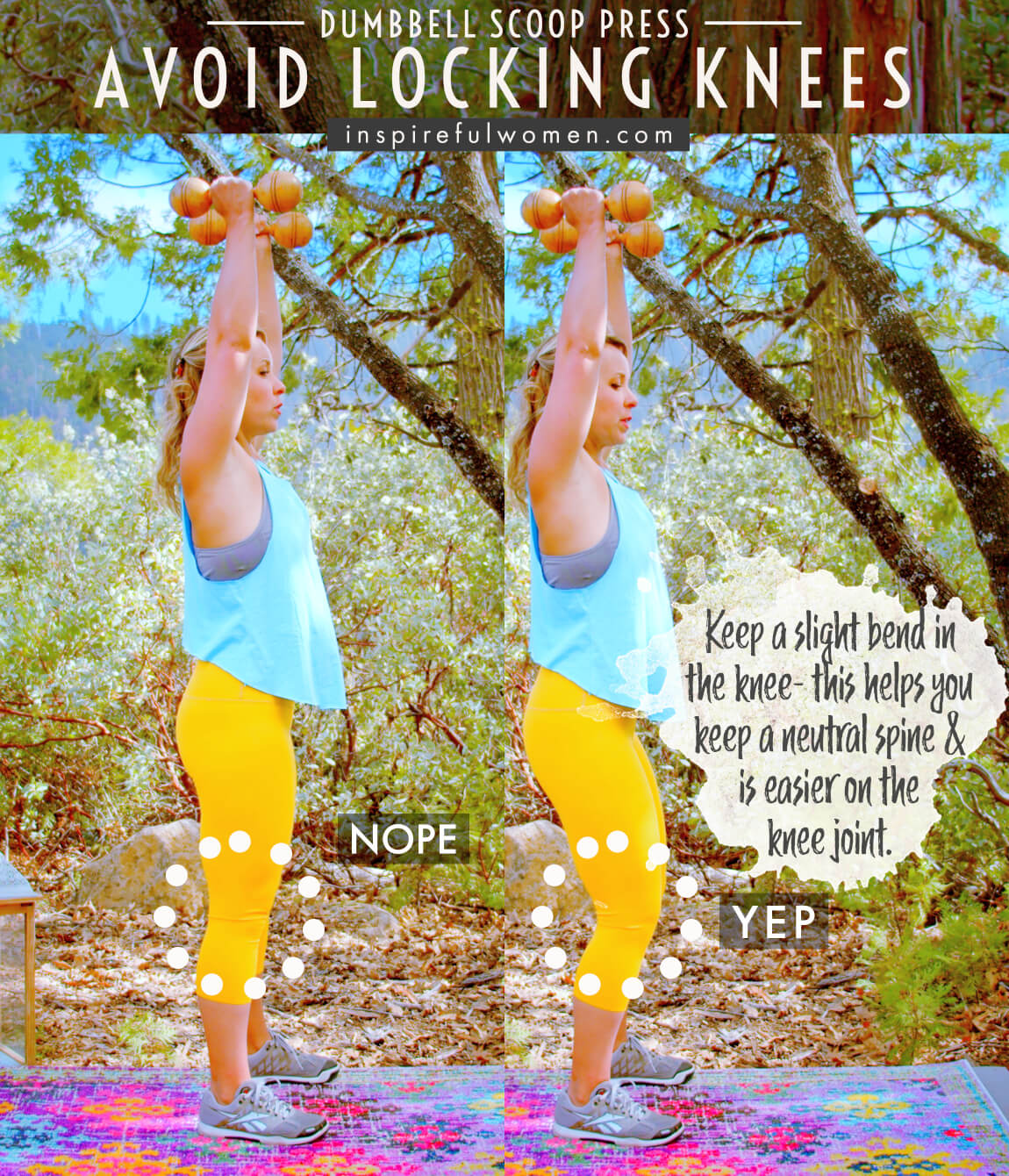
VARIATIONS
VARIATIONS
VARIATIONS OF Dumbbell Scoop Presses
stability ball
Sitting on Stability Ball Scoop Press
Sitting on a ball will be less stable than a chair but more stable than standing. Your core muscles will not have to work as hard to stabilize.
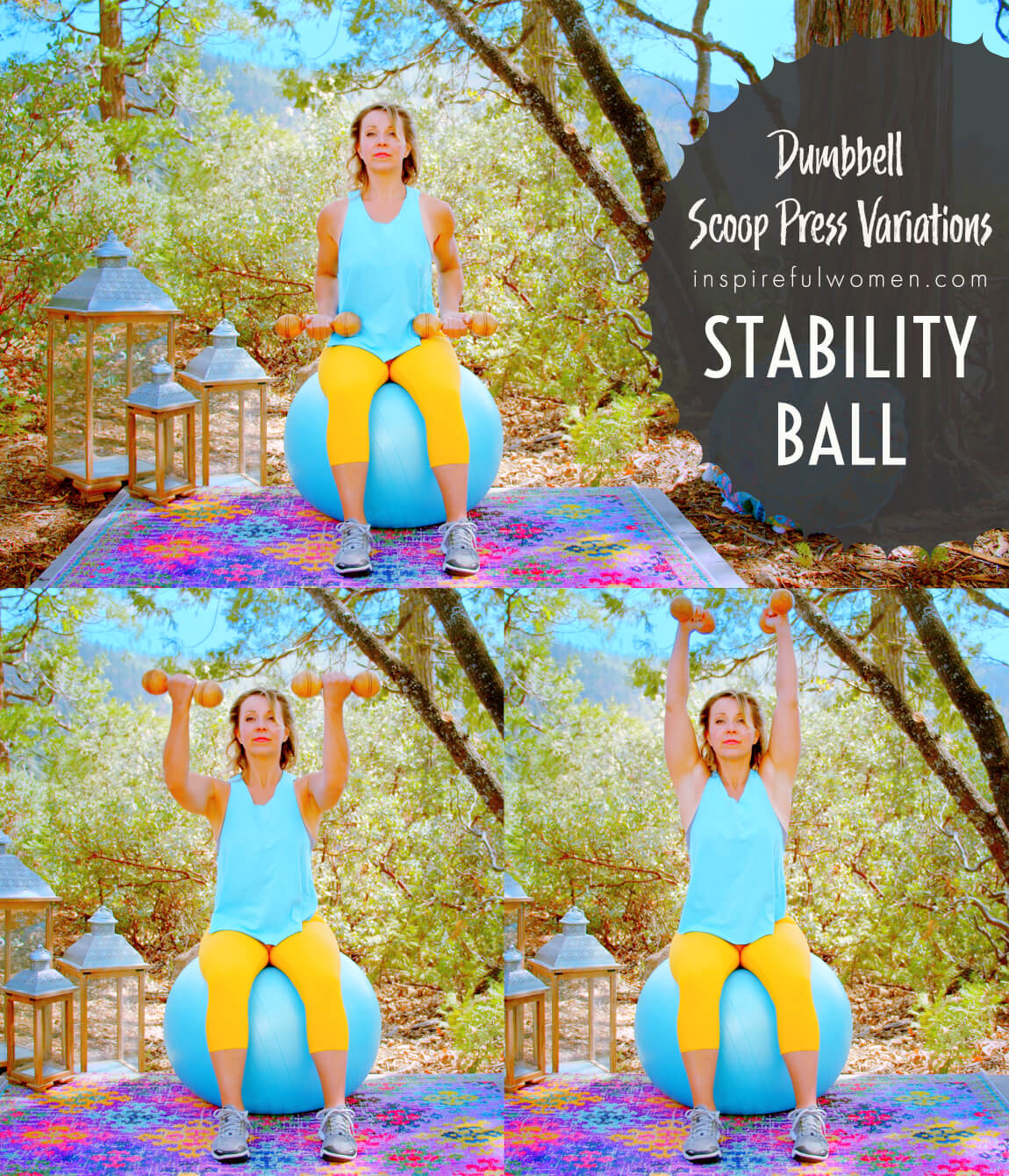
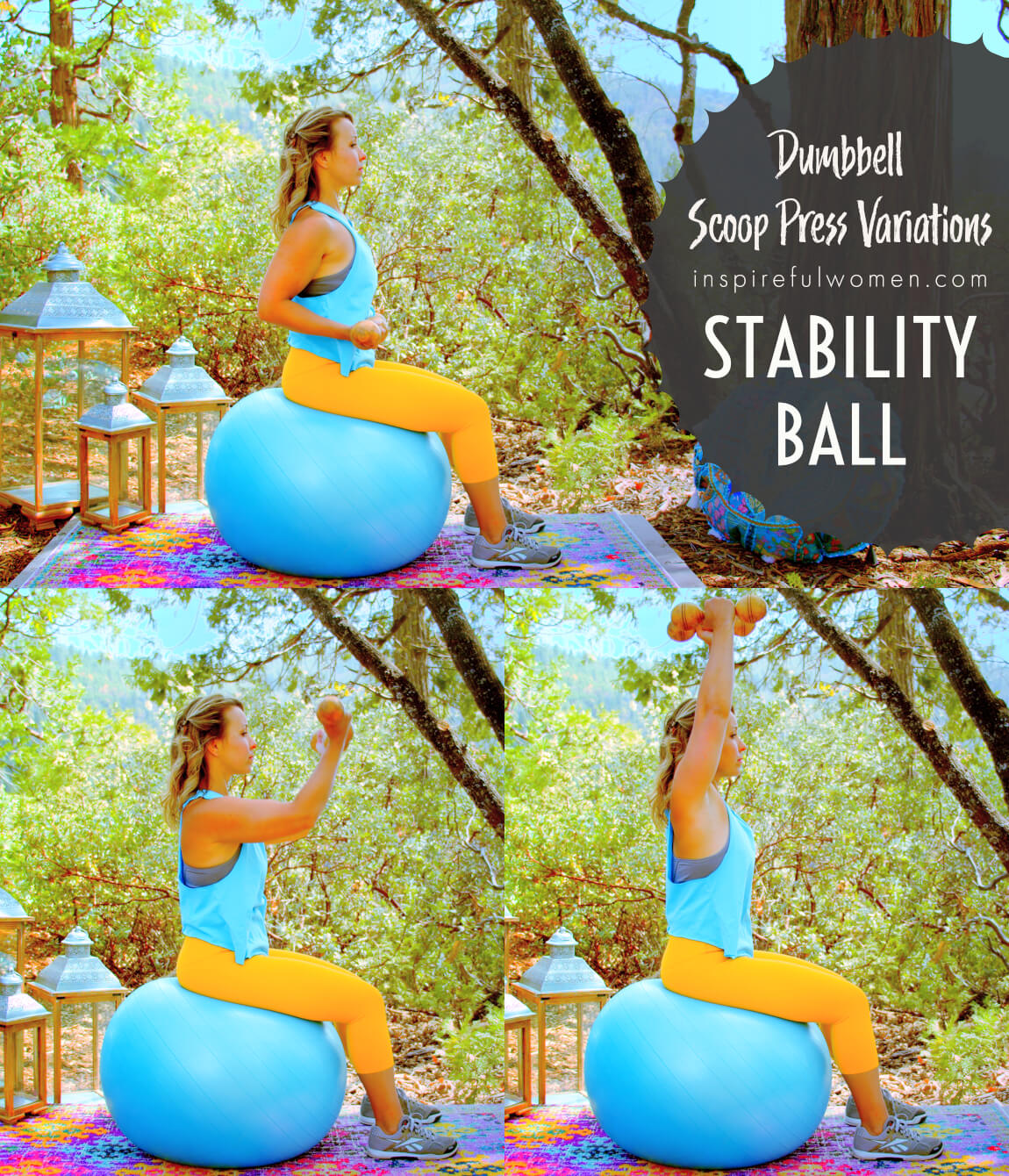
seated
Seated on chair scoop press
Sitting on a chair provides a more stable base. Do not lean back on the chair back, sit up tall with good posture. Your core muscles will not have to work as hard to stabilize.
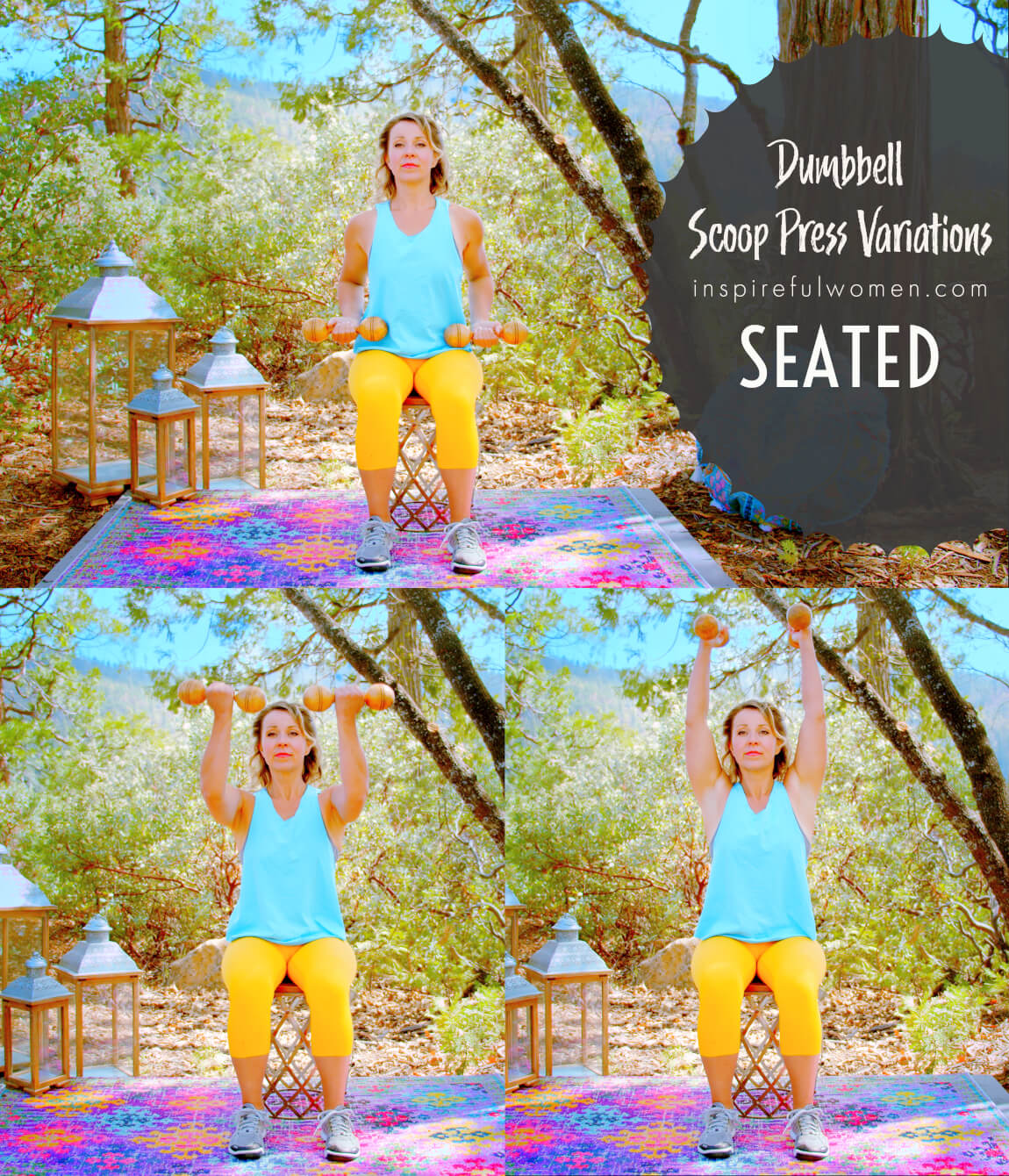
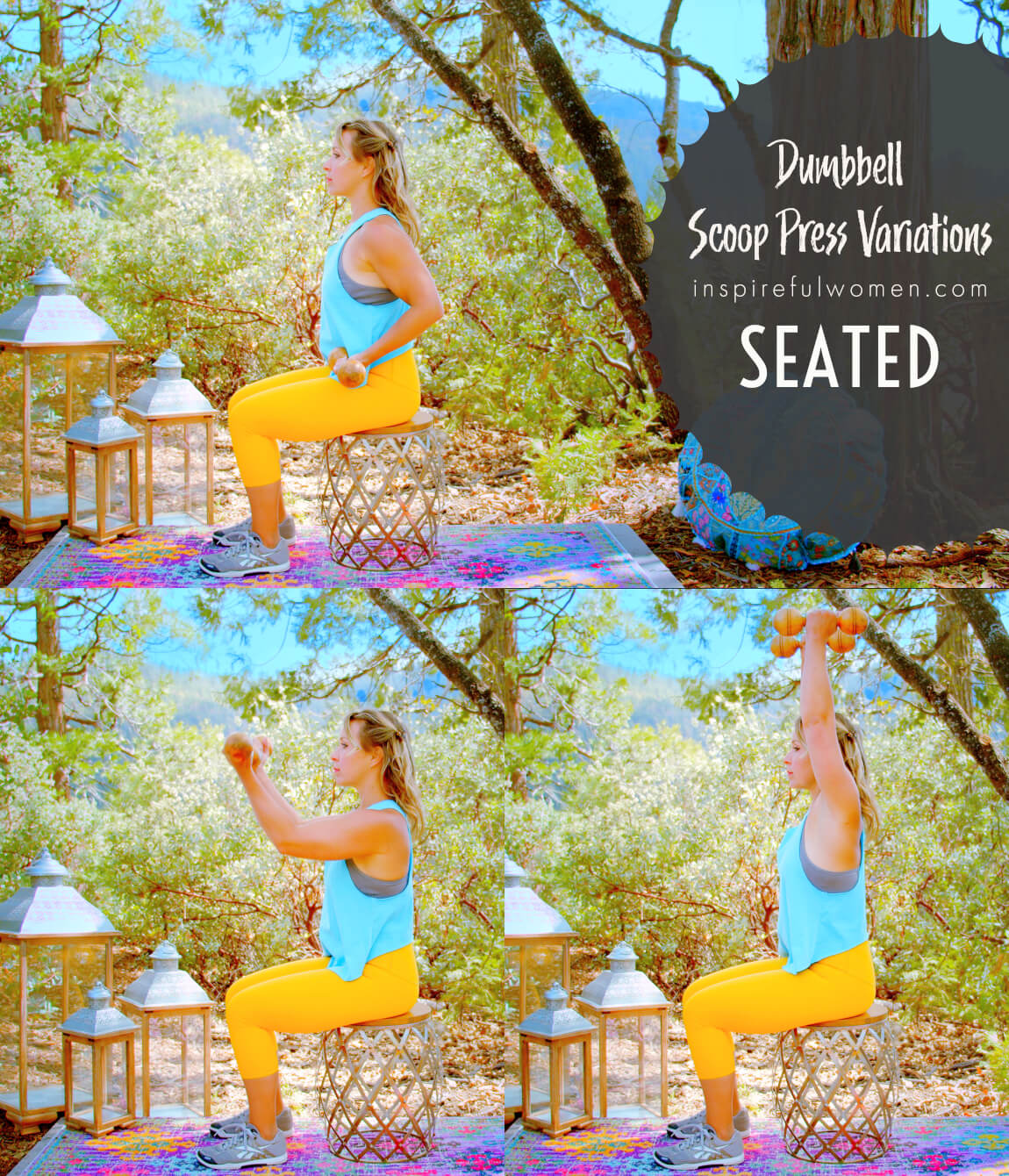
kneeling
kneeling dumbbell scoop press
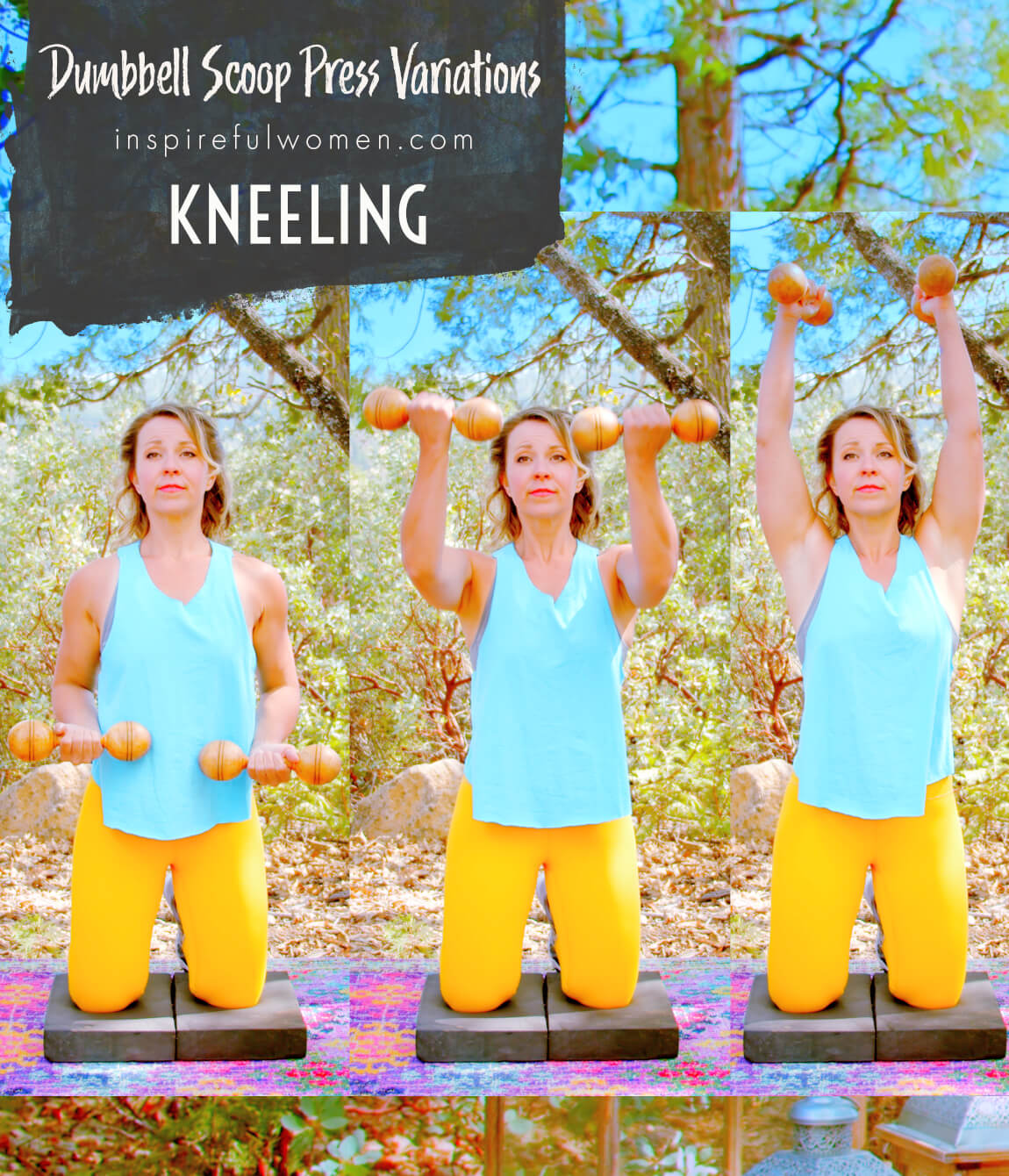
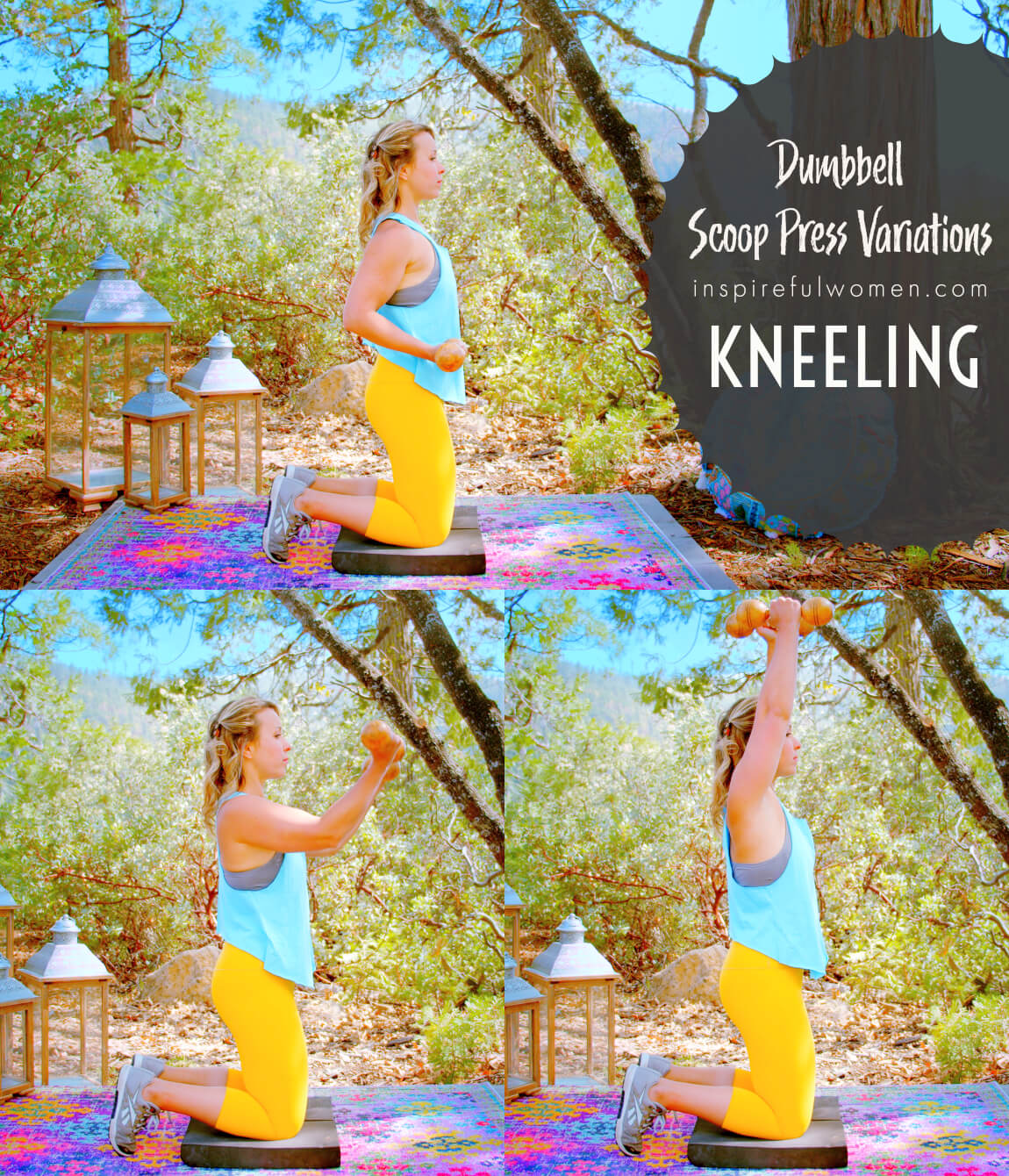
SCIENCY STUFF
ALLLL MUSCLES & WHEN
ALL MUSCLES WORKING & WHEN DURING THE Dumbbell Scoop Press
The elbows are bent to 90 degrees - in this position the biceps and brachialis (isometric contraction) will hold the elbow bent and supinated. The upper arm begins slightly extended behind the torso, the triceps, latissimus, and teres major work isometrically to hold this position. The shoulder blade is held back, down, in downward rotation by the rhomboids, middle and lower traps, latissimus dorsi, levator scapulae and pectoralis.
The core stabilizers work to hold the spine in a neutral position throughout the exercise.
The anterior deltoid. biceps, coracobrachialis, and pec major contract concentrically to move the upper arm forwards and up in a scooping motion. The trapezius works to rotate the shoulder blade up with the arm. The rotator cuff muscles (teres minor, supraspinatus, infraspinatus, subscapularis) will work in coordination as the arm moves up and down to hold the head of the humerus (upper arm bone) in the socket of the shoulder blade.
When the upper arm is parallel to the floor, the anterior deltoid, biceps, coracobrachialis, and pec major will continue to pull the upper arm. The lateral deltoid may help a bit at this point, especially if the weight is heavy or the anterior deltoid is fatigued. The serratus anterior and upper trap continue to rotate the shoulder blade upwards. The triceps contracts concentrically to straighten and stabilize the elbow joint.
The triceps and anterior deltoid. biceps, coracobrachialis, and pec major contract eccentrically to control the movement as the elbows bend and the upper arms are lowered back down. As the upper arm passes parallel to the floor, the biceps and brachialis will work isometrically to hold the elbow at 90 degrees of flexion.
The muscles of the shoulder blade that pull the shoulder blades back, down and into downward rotation will become active. The triceps, latissimus, and teres major work concentrically to return the upper arm to the starting position - slightly extended past the torso. This puts a slight stretch on the anterior deltoid, ready to begin the next rep.
PIN IT FOR LATER!
